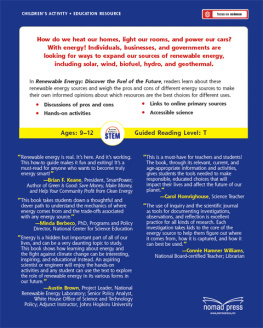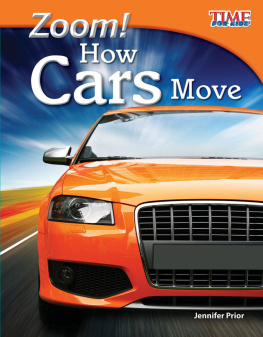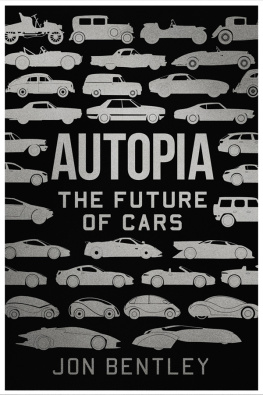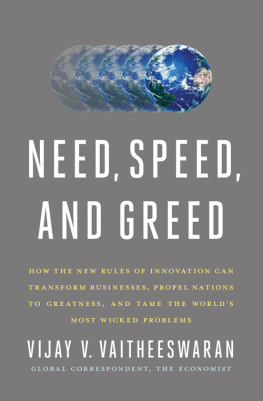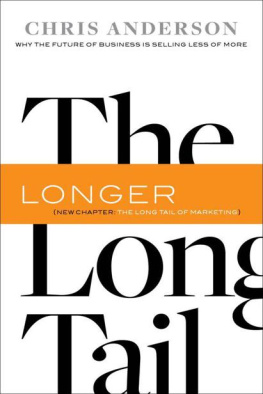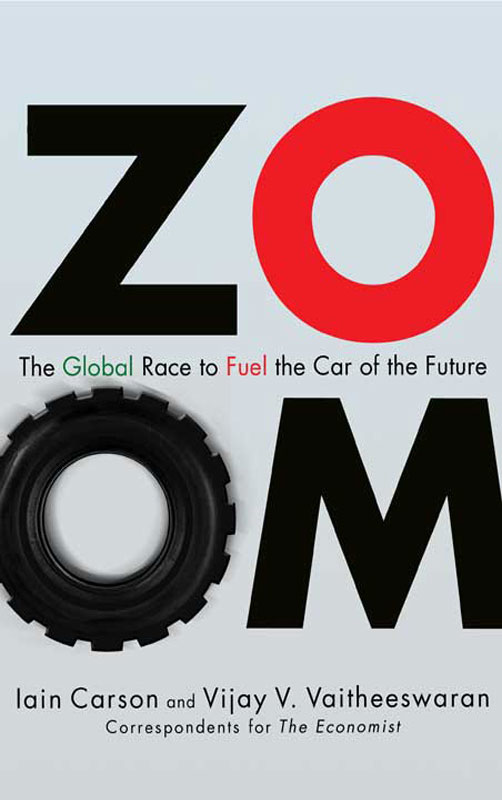Copyright 2007 by Iain Carson and Vijay V. Vaitheeswaran
All rights reserved. Except as permitted under the U.S. Copyright Act of 1976, no part of this publication may be reproduced, distributed, or transmitted in any form or by any means, or stored in a database or retrieval system, without the prior written permission of the publisher.
Twelve
Hachette Book Group
237 Park Avenue
New York, NY 10017
Visit our Web site at www.HachetteBookGroup.com.
The Twelve name and logo are trademarks of Hachette Book Group, Inc.
First eBook Edition: October 2007
ISBN: 978-0-446-40832-5
Also by Vijay V. Vaitheeswaran
Power to the People: How the Coming Energy Revolution Will Transform an Industry, Change Our Lives, and Maybe Even Save the Planet
For Sarah and Michelle
The Great Awakening
Oil is the problem; cars are the solution
I f you want to see the future of automobiles and energy, you dont need to travel to Japan. Look no further than Troy, Michigan, where a latter-day Thomas Edison is forging the path.
The ages of mankind have been classified by the materials they usethe Bronze Age, the Iron Age, the Age of Silicon. We are at the dawn of the Hydrogen Age. So proclaims Stanford Ovshinsky, cofounder of Energy Conversion Devices (ECD). What is more, the hydrogen economy is happening already.
It is refreshing to find a hydrogen advocate who has actually come up with the goods. After all, plenty of grandiose but unsubstantiated claims have been made over the past few years about the potential for hydrogen to replace fossil fuels as an energy carrier, so some skepticism is certainly in order. In particular, George Bush and the big car manufacturers have crowned fuel cells as the long-awaited replacement for the internal-combustion engine, but the date of commercialization for those automotive fuel cells somehow keeps slipping just beyond the horizon. Many argue that hydrogen is just a cynical long-term diversion used by Bush and Detroit to avoid short-term action on fuel-economy standards, plug-in hybrids, or other here-and-now options.
And yet, here is Stan Ovshinsky, still trumpeting the virtues of hydrogen. Ovshinsky is no hydrogen hypester. He first outlined his vision for what he calls a hydrogen loop some five decades ago as an alternative to fossil fuels. It starts with water, broken down by solar-powered electrolysis into useful hydrogen fuel that is stored in solid form or in batteries. That hydrogen is then used to power fuel cells, which release nothing but perfectly pure water vapor back into the atmosphere: The loop goes from water to water! he explains. Ovshinskys green credentials are impeccable. He and his wife Iris founded ECD in 1960 with the goal of using creative science to solve societal problems. They foresawlong before the oil shocks of the 1970sthat the worlds addiction to oil would lead to unacceptable side effects, ranging from resource wars to climate change.
Unlike hydrogen dreamers, he had actually developed products that overcome many (though not all) of the obstacles facing hydrogen. Billions of his breakthrough nickel-metal hydride batteries are now found in consumer devices, ranging from cell phones to game devices to laptops. The solid hydrogen storage system in his batteries is also used by Toyota in all of its Prius models, as well as in hybrid cars made by General Motors (GM), Honda, and other manufacturers. In other words, his quiet but dramatic work on hydrogen energy systems has made the single most important advance in automotive technologyhybrid electricscommercially possible.
Ovshinskys vision describes an arc that takes us from hydrogen batteries today to those superclean hydrogen-fuel cars twenty years into the future. He has delivered the key technology that is getting alternative cars on the move; his vision offers the ultimate solution, if it can clear the hurdles in its path. All along this trajectory, alternative engines and fuels will come and go as car and energy companies vie in the race to be first with the new technology that will serve the needs of a world worried about energy security and global warming. Zoom will tell you how the world came to be faced with this particular challenge, how we got into such a mess. It will chart the future challenge as billions of Chinese and Indians get wheels. It will mark your card on the runners and riders in the new global race to make the cars of the future.
You might wonder why this earnest and innovative do-gooder is fiddling around, trying to improve the automobile. After all, arent cars the problem in the first place? Cars are often scorned as the most intractable source of global warming. Our utter reliance on automobiles exposes the economy to potential economic shocks from volatile oil prices. To judge by the backlash against gas-guzzlers in recent years, many Americans seem to be convinced that sports-utility vehicles (SUVs) are the work of the devil. So perhaps it makes sense to get rid of the problem altogether.
The Real Trouble with Cars
Just imagine a world without cars. Suddenly, it might seem that three great evils widely associated with automobilesenvironmental harm, economic pain, and geopolitical insecuritywould vanish. But realistically, a world without cars would be a dim, joyless place with much-diminished freedom, mobility, and prosperity.
This is especially true for America, the birthplace of the modern automobile industry and most of the policy, technological, and cultural developments behind mass motorization. From drive-through banks, to drive-in churches, to roadside Holiday Inns, car culture permeates American life.
After a century of motorization, America crossed a threshold in 1995, when cars and light trucks first outnumbered drivers licenses in the country. Today, there are often more cars in the average American households driveway than there are drivers inside, and three-car garages are becoming the norm. Inspired by the American example, such developing giants as China and India are now taking to the roads too. Soon, we will be a world of a billion cars.
Oil is the problem, not cars. That is why we must reinvent the automobile. As engines of change, the clean cars of the future can help speed the world toward a more sensible approach to transportation. The snag is getting from here to there. Big Oil clearly has no interest in seeing its main product fall by the wayside, and the Detroit car industry has shown few signs of real innovation or long-term vision.
Stan Ovshinsky and a growing band of entrepreneurs, innovators, and outsiders are now working furiously to spur the sorts of innovations that the established industry powers, Big Autos and Big Oil, simply refuse to develop. The incumbents are doing precious little to save the planet, only perhaps changing a little to kill it less quickly. The energy industry has long had the knowledge needed to pursue petroleum substitutes but has chosen to defend and milk its existing gasoline assets. The car industry has also had the technical ability to produce cars with much greater fuel efficiency but has chosen to build gas-guzzlers instead. Believe it or not, Henry Fords Model T was a flex-fuel car that could run on either ethanol or gasoline and got better gas mileage than the average new vehicle sold in America today. Worse yet, both industries have bitterly fought government efforts to encourage the development of more efficient cars and alternative fuels or co-opted and corrupted such efforts to the point that they became meaningless.
Now the modern worlds most important energy visionary believes that we are on the cusp of a clean-energy revolution. Ovshinskys vision for a hydrogen loop was just a blackboard exercise when unveiled five decades ago. But since then, he has invented a new field of science (amorphous materials, named Ovonics in his honor) and produced innovations to bring that loop closer to reality. Joachim Doehler, a senior scientist at ECD, says, Stan starts with a visionsay, The computer must work like the mind doesand then goes out to invent what we need to get from here to there. It is a systems approach.


